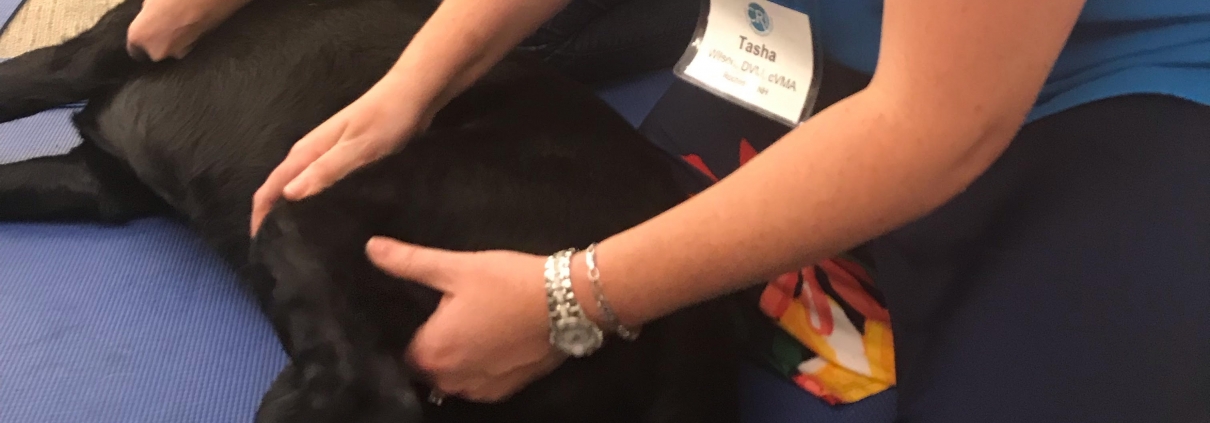Dr. Tasha Wilson is now officially a Certified Canine Rehabilitation Therapist!
Although the certification is officially for canine rehabilitation, I also offer feline rehabilitation, as well. I took a rehab therapy course through Canine Rehab Institute and I went to multiple classes in Colorado and Florida over the course of one year.
I learned about different ways to assess a patient for pain, by looking at their muscles and ligaments in their spine a little bit differently than I have before. I also learned different ways to evaluate pets for limping and strength, and how to evaluate flexibility tests and measurements to help determine progress after treatment has begun.
What is Canine Rehabilitation Therapy?
Canine Rehabilitation Therapy is a practice that “adapts human physical therapy techniques to increase function and mobility of joints and muscles in animals. Animal rehabilitation can reduce pain and enhance recovery from injury, surgery, degenerative diseases, age-related diseases, and obesity.”
Rehab therapy includes pain management as well. Neuromuscular stimulation, laser therapy, or acupuncture, plus joint mobilizations or “ massages” can help decrease inflammation and improve joint health.
Benefits of Canine (and Feline) Rehabilitation Therapy
I greatly enjoy treating pets with acupuncture and cold laser therapy. These modalities offer great pain control; however, once a pet’s pain level is controlled, it is good to slowly strengthen and condition them back to shape so they do not hurt themselves once they feel better.
That is what rehabilitation therapy provides. It also helps stimulate the nervous system- providing both musculoskeletal and neurological support. Some additional examples of the benefits of rehabilitation therapy include:
Pre and Post Surgery
Physical therapy is not only beneficial after surgery, but prior to surgery as well. Patients are typically undergoing surgery to fix an issue that is causing pain, and rehab therapy can help ease the pain a bit leading up to the surgery. After the surgery, it is necessary to ensure full recovery and to regain strength.
Neurological Issues
Rehab therapy can be extremely beneficial in neurological cases, by helping patients to increase nerve and muscle stimulation. It’s also a great way to help teach the body how to walk again, by reteaching the muscles, patterns of walking, and stimulating the nerves.
Geriatric Patients
Rehab therapy provides great mental stimulation for cats and dogs, and especially for older pets. Geriatric patients can benefit significantly from this type of therapy, as their comfort level typically improves after just one visit. I often give older pets heat, a massage, and stretch their muscles, which helps their posture and aids in pain control.
Feline Rehabilitation Therapy
Felines can benefit from rehabilitation therapy, too. Rehab therapy is good for cats who may have had a stroke, or those with neurological diseases and/or back diseases. For example, a feline who is having a hard time learning how to walk again could benefit from this type of therapy.
There are so many benefits to canine and feline rehabilitation therapy. After learning how patients have benefited from rehab therapy, I felt strongly that this would help my patients continue to improve and have a better comfort level.







Leave a Reply
Want to join the discussion?Feel free to contribute!